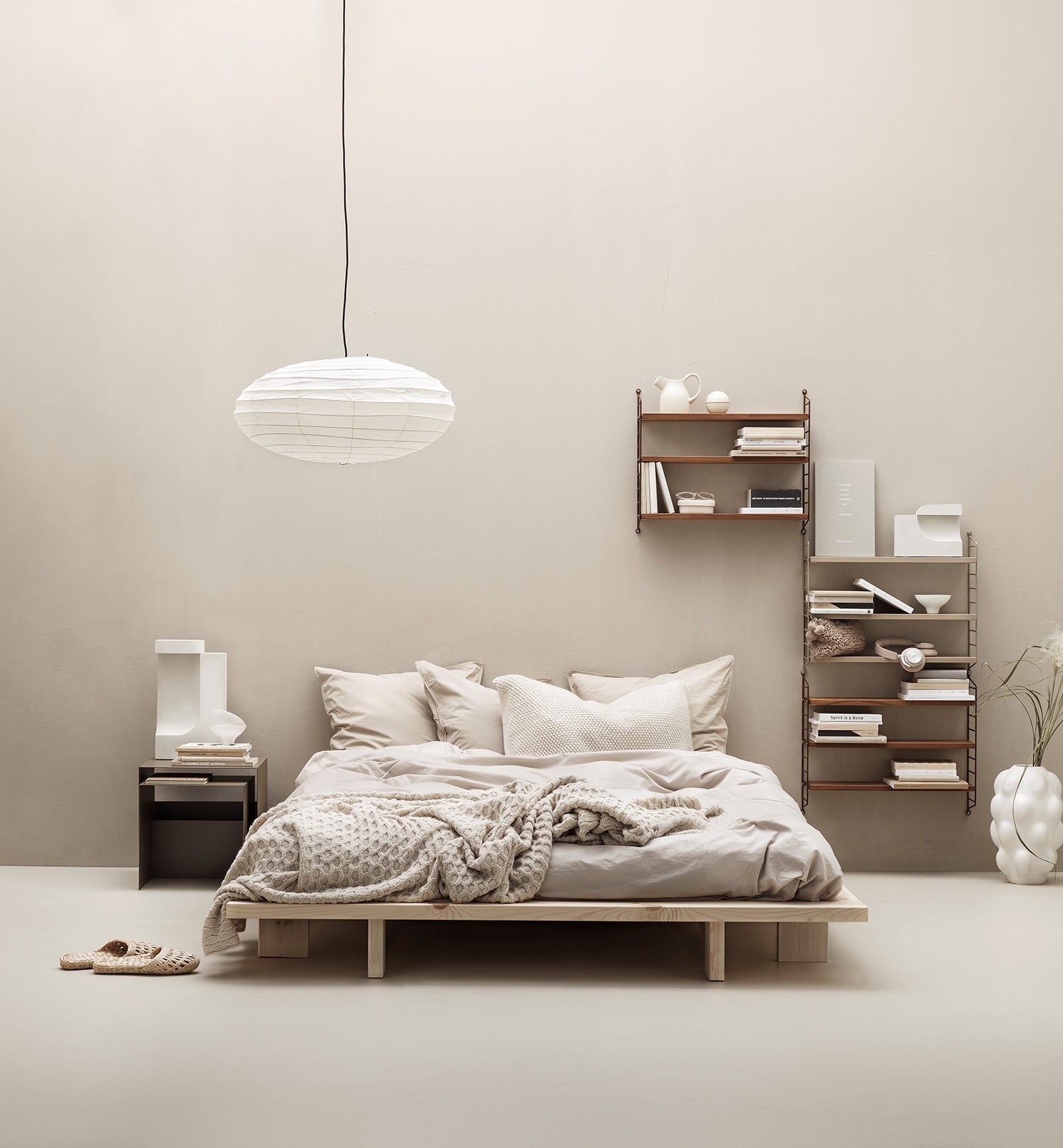How to bring the minimalism trend into your home
Liz Connor learns some essential tips for designing a calm and clutter-free space.

Life can be busy and hectic enough, so when it comes to our homes, it makes sense that many of us crave a peaceful and streamlined place to unwind after a long day.
Inspired largely by Japanese culture, minimalism has become one of the most popular lifestyle trends of recent years. The movement champions function, style and simplicity over busy, cluttered rooms overstuffed with too many items.
While living with less is a big part of minimalism, it’s by no means the only way to achieve a paired-back aesthetic. To make it simple, we asked experts to give us some top tips for creating a stress-free, minimal home…
1. Give decluttering a go
A minimalist home is simple, organised and free from junk – so a big decluttering session is a useful way to get started.
“We’re all guilty of having too much stuff and many of us don’t have enough space in our homes to keep everything organised. Instead, our belongings are spilling out of cupboards, creating chaos rather than calm,” says home organisation expert Diana Spellman, founder of Serenely Sorted (serenelysorted.com).
As a good rule of thumb, Spellman suggests getting rid of anything you haven’t used for the past year. “If you have two of the same item, donate the second. Get rid of obsolete technology too. Even if you still use your DVD player and DVDs, put them all in plastic wallets and ditch the cases – then they can be nicely stored in a drawer and out of eyesight.”
2. Find a place for everything
“The biggest benefits of minimalism are the relaxation, calm and serenity you can feel as a result of having less stuff and being organised – so it’s not just what is on your surfaces that matters, but how you organise your home for smooth day-to-day living,” stresses Spellman.
Essentially, you won’t feel the benefit if your surfaces are clear but you’ve shoved things in a cupboard. “It may give the façade of ‘minimalism’, but you’ll only find chaos underneath.”
Spellman starts with what she calls ‘end homes’ – creating specific places within baskets or drawers where each thing lives, so when you are clearing surfaces at the end of the day, you’re not tempted to shove it in a pile. The more ‘end homes’ you create, the quicker and easier it is to tidy up.
3. Use mirrored surfaces to maximise space
Although the use of accessories in a minimalist home is limited, it doesn’t mean you can’t use them at all. This trend is all about achieving a sense of space and freedom, and mirrors are a clever way to create spacial illusions.
Hanging mirrors, or choosing mirrored furniture, can bounce light around a room, making it feel bigger. You could also choose metallic accent details – whether it’s practical items like copper pans and utensil holders, or decorations like plant pots and picture frames to reflect beams of light. If metallic isn’t to your taste, white works well too.
4. Invest in hidden storage
Sleek, hidden storage can be key in getting organised. “Creating a beautifully organised space that suits the needs and functions of the household has never felt so important, and a custom solution helps to achieve a great balance between practicality and style,” says Rachal Hutcheson, national retail manager at Sharps (sharps.co.uk). “As well as providing storage for books and decorative accessories, fitted living room furniture can help to house TV and audio equipment, efficiently hiding unsightly cables and mounts, integrating technology with style.”
If you can’t afford to invest in made-to-order cabinets, clever furniture like beds and sofas that include storage spaces or drawers can maximise space and take clutter off show. We like Snug’s The Cloud Sundae three-seater sofa, (£1,599, snugsofa.com) which has bucket storage for storing blankets and extra pillows.
5. Don’t feel the need to replicate exactly what you see on social media
“Classic minimalism is characterised by extreme sparseness and simplicity – which looks stunning in photos of New York apartment lofts – but perhaps this isn’t practical for your home or flat,” says Spellman.
“Do these households have kids running riot daily and parents working full time? I doubt it. Instead, think realistic minimalism; look at your surfaces and think about reducing the number of items on display gradually.”
6. Switch out your lighting
Home lighting has evolved in recent years and if you want to create a cosy atmosphere in your living room, you don’t need multiple lamps taking up space.
Smart bulbs, like the Philips Hue range (philips-hue.com), can change the colour and brightness in your home at the tap of a smartphone app – or by simply asking your Google Assistant, Amazon Alexa or Apple Homekit to do the job. Philips Hue Lightstrips (from £19.99) can also mount directly to your TV, kitchen cabinets or under your sofa to give you a soft halo of light during the evening.
7. Make the most of awkward spaces
Tight corners, the space under your stairs, the tops of cabinets and sloping loft spaces can all be put to good use with some clever design solutions.
“There are many awkward spaces within the home – and by utilising these areas, an unused part of the house can become a personalised storage hub,” says Simon Tcherniak. designer at Neville Johnson (nevillejohnson.co.uk). Basically, you could be living with a mountain of unused space.
Bookmark popover
Removed from bookmarks